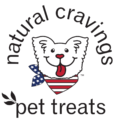HOW TO READ A DOG FOOD NUTRITION LABEL?
Pet nutrition can be confusing, especially when reading a dog food nutrition label. It’s important to understand the different ingredients and what they mean for your pet.
Some of the most common ingredients in pet food include protein, grains, and vegetables. It’s essential to choose a food that has a good balance of these ingredients and other essential nutrients like minerals and vitamins.

Labels can be confusing, as they often disguise ingredients. If you ever see the word “millings” attached, run from this food! It’s commonly a filler similar to sawdust.
Disguised ingredients can make it difficult to determine whether a food is good or not. So today, we will walk you through some ways to ensure that your dog is getting the best nutrition.
Related: Everything You Need to Know Before Adopting A Dog
AAFCO
The Association of American Feed Control Officials has a unique job in the pet industry, and the AAFCO doesn’t regulate or test the nutrition levels of brands. However, it establishes guidelines for ingredient definitions, label information, and laboratory analyses of the nutrients that go into pet foods.
You’ll see these ratings when it comes to things like defining puppy food or senior maintenance. However, it’s the FDA that actually regulates the ingredients and production process of dog food.
HOW TO READ A DOG FOOD LABEL?
A critical first step to ensuring that your dog is getting the proper nutrition is looking over the label. Knowing exactly what it says, and more importantly, what it means, can help your pup get on track for a healthy life.
DOG FOOD LABEL FORMAT
All pet food labels will generally have the same format and information. This makes it easy to compare brands. You’ll see:
- Product and brand name
- Product weight; this can be pounds, ounces, or another form of measurement, depending on the type of food.
- Guaranteed analysis
- Ingredients
- Nutritional adequacy statement proves the food provides a certain level of nutrients.
- Recommended feeding amount
- Manufacturer’s name and address
- Calories
But what do those terms really mean? We’ll break each one down real quick.
Related: Working from Home With Your Pet- A Survival Guide
Product Name
There’s more to the product name than clever marketing. The name will provide you with your first indication about the components. Many pet owners make their purchase decisions based on ingredients, so brands will often highlight that component in the product name.
However, the AAFCO has four stipulations:
- The 95 Percent Rule: A minimum of 95 percent of the named product needs to be said named ingredient. For example, “Chicken for Dogs” must include at least 95 percent chicken. Furthermore, this main product must be at least 70 percent of the total product when counting the added water. The AAFCO allows the remaining five percent to be for additives such as vitamins and minerals.
- The 25 Percent Rule: Some lines offer foods labeled “Beef Dinner for Dogs” or “Chicken and Sweet Potato Entrée,” which is the 25 percent rule in action. If at least 25% of the product (not counting the water that is used to process it) is made up of named ingredients, but less than 95%, the product must include a qualifying term like “dinner,” “entrée,” or “platter.”
- The “With” Rule: One word can make a big difference. Labels like “Doggie Dinner With Beef,” the named ingredient needs to be only 3 percent of the product.
- The Flavor Rule: According to the FDA, remember, they regulate what goes into the food. If the label says “Chicken Flavor Dog Food,” then the ingredient only needs to be detected. Flavored food doesn’t need a specific percentage. However, the word “flavor” must appear in the same font, size, color, etc., as the word “chicken.”

Quantity
Bigger isn’t always better. Products can vary depending on the type of food, and the best way to compare costs is to break down each food into a cost-per-ounce or cost-per-pound.
Guaranteed Analysis
Many states have regulations on some of the minimum and maximum amounts of nutrients a pet food must contain. There’s also a detailed explanation of how the guaranteed analysis is calculated on the FDA’s website if you’re interested.
Ingredients
This might be the most critical part of reading your dog’s food label. Also, be sure to keep in mind that ingredients are all listed in order of amount, and the first ingredient will always be the majority of what is in the food.
Dr. Jerry Klein, the AKC’s chief veterinary officer, talks about pet food ingredient labels. “Each ingredient must be listed individually, and, according to AAFCO regulations, terms describing collective ingredients, such as “animal protein products” are not allowed.”
Furthermore, ingredients must use their common name to make them easy to identify. You can find a detailed list of ingredients and what they contain on the AAFCO website.
For a natural way to treat your dog, shop Natural Cravings. With no added ingredients, preservatives, their chews and treats are simply the natural choice for your dog.
Byproducts
While we may cringe at the term, byproducts can be an excellent addition to some dog foods. Byproducts are made up of animal parts such as the liver, blood, brains, bone, stomach, and cleaned intestines. Meat meals may also contain ingredients we consider byproducts. So while it may sound unappetizing to us, dogs don’t mind.
Nutritional Adequacy Statement
Many dog foods on the market claim to be “complete and balanced” or “100 percent nutritious.” This means that the dog food meets specific government standards. These standards ensure complete and balanced nutrition for all life stages of adult dogs, according to AAFCO standards.
However, it’s important to note that products targeting a specific life stage, such as “senior” or a particular breed, must only meet the requirements for adult maintenance, but no more.
Feeding Directions
Feeding directions help you determine how much food your dog should have. However, this is not regulated and doesn’t factor in things like breed, temperament, environment, and other factors.

DECIPHERING THE DESCRIPTIVE TERMS
It’s possible that you’re intrigued by an emerging pet food trend and want to learn more about it. There are new trends popping up all the time in pet food, and it might be tough to know exactly what you’re getting.
Organic: There are currently no specific regulations for labeling organic foods for pets, but the U.S. Department of Agriculture is working on some. Furthermore, dog foods that claims to be organic must meet the specific requirements of the USDA’s National Organic Program to be considered organic.
These foods are:
- Free from artificial preservatives, coloring, or flavoring.
- Free from antibiotics or growth hormones used in meat or meat byproducts.
- No or little fillers.
Grain-free: There is little veterinary science when it comes to the benefits of grain-free dog food. Some vets have noticed that there’s a possibility grain-free diets can cause an increase in heart complications. However, some dogs will allergies would benefit from this style of diet. The FDA is researching more about Grain-free diets because of this concern.
New proteins: Insect protein, venison, bison, all of these are not really new. Furthermore, it’s hard to compare their benefits because they have different digestibility and nutrition profiles than proteins like chicken or beef.
Related: Deciding the Best Protien for Your Dog
Human-grade dog food: This type of label indicates that a food is legally edible and approved as nourishment for humans and is highly regulated by the FDA and the USDA. However, the AAFCO has some other stipulations on what is considered human edible. Such as, the product must be manufactured, packed, and held under federal regulations for other human-grade food.
WHAT’S THE BEST FOOD FOR YOUR DOG?
Dogs need a variety of nutrients to stay happy and healthy. These nutrients are available in the four main components of your dog’s food: carbohydrates, protein, fat, and fiber, and many foods on the market offer these. But how do you know what is best for your dog?
There are many factors to consider when selecting the best food for your dog, including their age, breed, and health condition. You should also look for a food that meets the nutritional adequacy statement and features feeding directions tailored to your dog’s individual needs. You should also be wary of terms like “grain-free” and “human-grade,” as there is no regulatory standard for their use. Instead, focus on the quality of ingredients.
When in doubt, talk with your vet and get their input about your dog’s specific needs.

CONCLUSION
Ensuring your dog has the proper nutrition is critical for them to have a happy, long life. However, it can be hard to understand what dog food is best for your dog with all the new trends and marketing techniques.
If you’re not sure where to start or need some help assessing your dog’s needs, ask your vet for their opinion. Your vet will be able to guide you toward the right product for your pet’s specific needs.
Are you looking for the best natural chew and treats for your dog? Check out Natural Craving today for a natural way to spoil your pup! Shop now for a happier dog.

